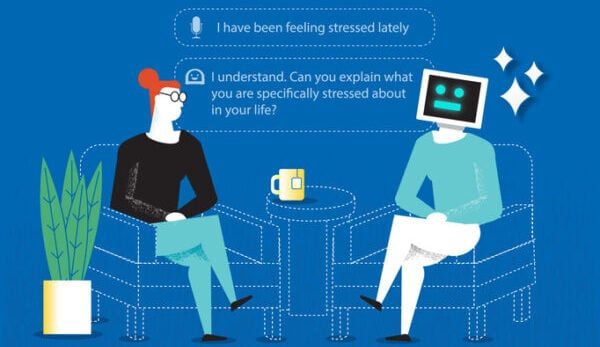When seconds count, and emergencies strike, accurate information can make all the difference in saving a life. First aid knowledge is a vital life skill that empowers us to respond swiftly and effectively. However, some outdated medical practices continue circulating, or even some TV shows and movies display false and unsafe emergency handling methods. Whether it’s obsolete information or emerging misconceptions, everyone has fallen at least once for one of these myths. In this blog, Coast2Coast’s editorial team, one of the top-rated first-aid trainers in Canada, will help us discover the truth about the 10 most common first-aid myths.
Myth #1: Slow down the spread of a venomous bite through the body by cutting the wound or applying suction, ice, electricity, or a tourniquet.
Although these measures might sound promising, they are ineffective in slowing venom spread. In most cases, it will cause pain and injury.
Snake bites
Most of the snakes that can be found in Canada are non-venomous. Yet, there are 3 venomous rattlesnakes to be aware of: Northern Pacific Rattlesnakes, Massasauga Rattlesnakes, and Prairie Rattlesnakes.
The best way to prevent snake bites is to wear proper footwear when hiking and always be aware of your surroundings. If you encounter a rattlesnake, slowly back away to ensure the snake is not aggravated.
Call emergency medical services immediately if you get bitten by a venomous snake, and keep a log of the snake’s attack to help medical responders choose the best treatment. Also, it is advisable to keep the victim still and calm to slow the venom from spreading. You can wash the wound with water and cover it with a clean, dry cloth.
Spider bites
When it comes to Canadian spiders, you should watch out for the brown recluse and the black widow. These bites can be life-threatening, so you must seek medical attention immediately, wash the area with water and cover the wound with a cold, dry cloth.
Myth #2: Calm hyperventilation by breathing into a paper bag.
Many factors, such as asthma, panic attacks, or anxiety, can trigger hyperventilation. The best way to prevent hyperventilation attacks is to learn more about and avoid the triggers.
We have seen in several movies that breathing into a paper bag helps calm people with hyperventilation by restoring lost carbon dioxide to the body. However, this practice is hazardous, and there are better methods to help regulate breathing, such as encouraging the patient to take deep, slow, controlled breaths.
Myth #3: You can safely get rid of the tick by burning it with a flame or by applying petroleum jelly or nail polish on it.
These remedies are not the most effective methods because they rely on the tick detaching itself, which could take hours. Also, it could create a sense of danger for the tick, increasing the likelihood of exposure to Lyme disease.
Instead, use tweezers to grasp the tick by the head as close to the person’s skin as possible and pull upwards slowly until the tick releases.
Myth #4: Inducing vomiting can remove poison from the human body.
Inducing vomiting in a poisoned person often causes additional harm and is not recommended. All toxic substances can cause various injuries when swallowed, and releasing these same toxins can cause more damage as they travel up the body. Always seek medical attention and follow their instructions closely.
Myth #5: A person with a concussion who falls asleep could die.
Generally, it is safe for a person with a concussion to fall asleep. Some healthcare professionals may recommend waking the person up occasionally to ensure their symptoms don’t get worse.
Myth #6: You should delay calling someone EMS/9-1-1 if in doubt that he is having angina rather than a complete heart attack.
You should always call EMS/9-1-1 if you have reason to suspect someone may be having a heart attack. People often worry about calling emergency services for a “false alarm,” but heart attacks are often fatal if the patient doesn’t receive medical attention promptly.
Myth #7: Tilt your head back to stop a nosebleed.
Tilting your head out after a nosebleed is a widespread habit that should not be continued. This can cause blood to pool in the throat and cause choking, stomach irritation, or vomiting. The best way to treat a nosebleed is to sit up straight and lean slightly forward to let the blood drain from the nose. Then, pinch the soft part of the nose for 10 to 15 minutes or until the bleeding stops.
Myth #8: Performing CPR compressions requires considerable upper-body strength.
According to the proper CPR training, compressions come from the core and the upper body’s weight, not from your arm muscles. Improper body technique or posture can cause your arms and shoulders to tire quickly when giving CPR. Avoid swaying back and forth, making your compression less effective and wasting energy.
Myth #9: CPR can instantly wake someone up.
Although CPR is a life-saving procedure, unlike in the movies, its purpose and function is not to wake someone immediately. CPR increases survival rates for cardiac arrest victims by restoring blood flow to vital organs.
Myth #10: Remove impaled objects immediately.
The removal of an impaled object can do more harm than good. This object puts internal pressure on the wound, helping to control internal bleeding. If removed, the patient risks continued bleeding that cannot be controlled externally. So, instead of removing the foreign body, put gauze on the area, place a clean rag around it, and seek medical attention.
Get First Aid Training
Coast2Coast empowers people with the latest first-aid knowledge to handle emergencies effectively. No matter where in the world you are, you can be a hero and save lives, too. We have a 100% online first-aid course, and if you are in Canada, find the nearest location to get yourself certified today.
***
You Might Also Like These From The Good Men Project
 Compliments Men Want to Hear More Often
Compliments Men Want to Hear More Often  Relationships Aren’t Easy, But They’re Worth It
Relationships Aren’t Easy, But They’re Worth It  The One Thing Men Want More Than Sex
The One Thing Men Want More Than Sex  ..A Man’s Kiss Tells You Everything
..A Man’s Kiss Tells You Everything Join The Good Men Project as a Premium Member today.
All Premium Members get to view The Good Men Project with NO ADS.
A $50 annual membership gives you an all access pass. You can be a part of every call, group, class and community.
A $25 annual membership gives you access to one class, one Social Interest group and our online communities.
A $12 annual membership gives you access to our Friday calls with the publisher, our online community.
Register New Account
Log in if you wish to renew an existing subscription.
Username
First Name
Last Name
Password
Password Again
Choose your subscription level
- Yearly - $50.00 - 1 Year
- Monthly - $6.99 - 1 Month
Credit / Debit Card PayPal Choose Your Payment Method
Auto Renew
Subscribe to The Good Men Project Daily Newsletter By completing this registration form, you are also agreeing to our Terms of Service which can be found here.Need more info? A complete list of benefits is here.
—
Photo credit: iStock
The post 10 Most Common Myths Around First Aid appeared first on The Good Men Project.
Original Article










